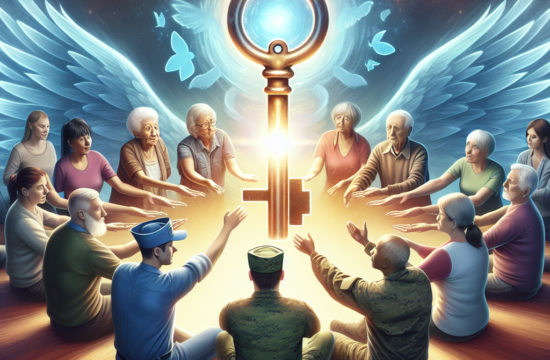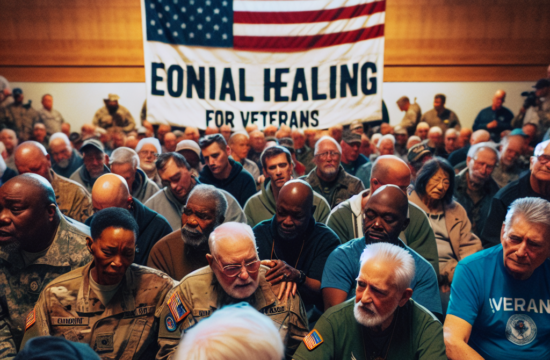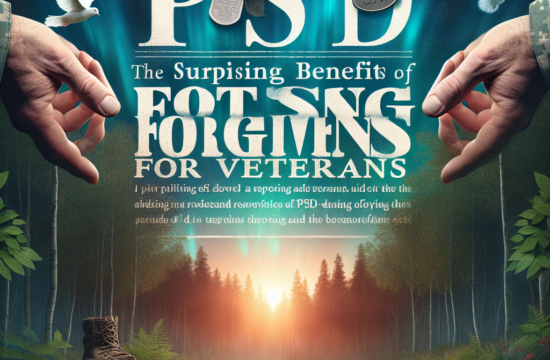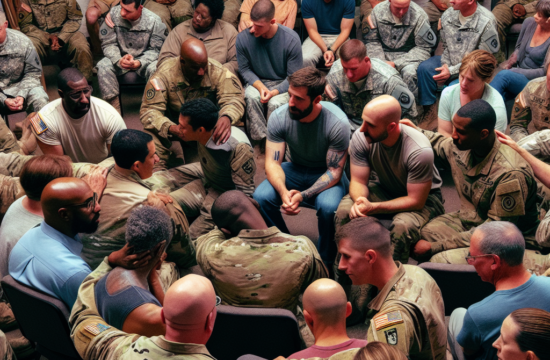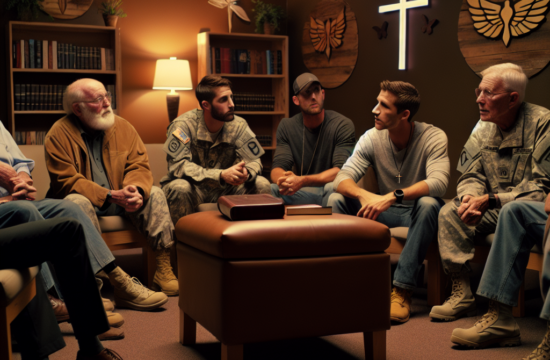==> Thank you for reading this post! Click Here If you are looking for support and Victory over PTSD.
Re-experiencing Trauma
Intrusive Memories
One of the toughest things I’ve witnessed in combat veterans is the way intrusive memories can sneak up on them. Imagine you’re just sitting down for dinner, and suddenly, BAM! You’re back in that place, that moment, reliving the worst parts. It’s haunting, and it doesn’t always make sense. These memories feel like they interrupt life, popping up uninvited at the most awkward times.
For many veterans, these intrusive memories can manifest as flashbacks. It’s as if they’re transported back to the battlefield, and it’s not just in their minds—they can feel the emotions, the terror, and the adrenaline flooding back. It’s a visceral experience, and it often leaves them shaken and confused.
Dealing with these memories isn’t easy. I’ve learned that some veterans try to avoid situations that may trigger these flashbacks, which can lead to social withdrawal. Just imagine wanting to be with your friends but feeling too scared to leave the house! It’s a battle—one that many combat veterans fight silently.
Nightmares
Nightmares are another area where combat veterans really struggle. It’s not just a bad dream; it’s reliving the trauma over and over again while trying to find peace in sleep. I can’t count how many veterans I’ve talked to who dread going to sleep because they know those dreams will come for them.
These nightmares can feel so real that they leave a lasting impression. They often wake up in a cold sweat, heart racing, struggling to separate reality from the nightmare they just experienced. It’s exhausting! And the lack of quality sleep can result in a vicious cycle of fatigue and anxiety during the day.
Addressing these nightmares often involves therapy, like EMDR or cognitive-behavioral therapy. It’s crucial to find effective coping mechanisms that work for them, so they can break the cycle and reclaim a sense of peace at night.
Flashbacks
Flashbacks are a particularly intense symptom that many veterans face. Imagine the room around you disappearing, and you’re suddenly back in a war zone. I’ve had friends who describe it as if time travel isn’t just sci-fi; it’s their reality. They seem disconnected from the present, trapped in that moment of horror.
It’s heartbreaking to see the confusion and panic flash across their faces. This symptom can lead to behaviors like avoidance, where they might not engage in activities that remind them of their trauma. Social gatherings? Forget it. It’s like being locked in a cage, yearning to escape yet feeling utterly powerless.
Learning about these flashbacks and going through exposure therapy can help, but it’s essential for friends and family to understand what’s happening. Compassion and patience go a long way in helping them feel safe enough to talk about their experiences, ultimately allowing them to face and conquer those haunting moments.
Avoidance and Numbing
Avoiding Triggers
I’ve observed that many veterans might start avoiding places, people, or activities that remind them of their trauma. It’s not just about dodging a conversation; sometimes, they’ll stop attending events altogether. I can’t blame them, honestly. Who wants to be reminded of harrowing experiences every single day?
This kind of avoidance can lead to isolation. They might think, “If I can just stay home and not deal with that, I’ll be okay.” But the more they isolate themselves, the harder it becomes to reconnect with friends and family. I’ve seen it tear apart relationships over time.
Talking openly about these triggers can be incredibly hard, but it’s essential for healing. Understanding triggers means they can find ways to cope, reform connections, and build a supportive environment instead of living in a bubble of avoidance.
Emotional Numbing
Emotional numbing is like a cloudy haze washing over their feelings. They might feel nothing or extreme grief at once, which confuses them. It’s as if they’re watching their life unfold from a distance. They might say things like, “I don’t feel anything anymore,” and that hits hard. I truly believe emotions are what make life vibrant, and it’s tragic when they’re dulled down.
This numbing isn’t just a defense mechanism; it can be frightening for them, feeling disconnected from their own emotions or loved ones. I’ve seen veterans struggle to maintain healthy relationships because they’re afraid of feeling too much—or worse, feeling nothing at all.
Therapeutic techniques focusing on mindfulness and reconnecting with their feelings can help them slowly unravel those layers of numbness. It’s about taking small steps toward feeling again and allowing joy and love to flood back into their lives.
Withdrawal from Activities
Many combat veterans withdraw from activities they used to love. Whether it was hunting, playing sports, or even just hanging out with friends, these pastimes often take a backseat. What used to feel like fun now feels full of apprehension and dread. I get it; change is hard!
It’s like they’ve lost a piece of their identity. I remember a buddy of mine who was once the life of the party. After returning, he barely wanted to step outside his house. This withdrawal can lead to a spiral of depression, as hobbies and social interactions that were once sources of joy are replaced with loneliness.
Encouragement from friends and family is vital in these moments. It’s all about small steps, reintroducing those activities into their lives in a non-threatening way. Slowly but surely, they can find their way back to joy and fulfillment.
Changes in Cognition and Mood
<h3/Negative Thoughts
Negative thoughts can really take a toll on combat veterans. They might spiral into feelings of shame, guilt, or intense sadness. This inner dialogue can be vicious, convincing them they’re not worthy of happiness after what they’ve been through. It almost feels as if the trauma rewrites their narrative, and it’s up to them to reclaim the pen.
I’ve had deep conversations with veterans who express feeling as though there’s no way out, which is heartbreaking. They often think that nobody understands their pain, which heightens feelings of loneliness and isolation. Having someone to break that silence and remind them of their strength can be a game-changer!
To combat these negative thoughts, cognitive restructuring is an effective tool. This means working through those feelings with therapy to help them reframe the narrative about their worth and experiences. It can take time, but understanding they’re not alone in this journey is a vital first step.
Feelings of Hopelessness
Hopelessness can wrap around combat veterans like a thick fog; it clouds their thoughts and perceptions. They may feel trapped inside their own heads, leading to despair and despondency. I can’t help but feel pain for those who see no light at the end of the tunnel, thinking there’s no escape from the pain.
Get Support and Help with Recovery! Visit us for more Information and Support
Description of this hopelessness often translates into a lack of motivation to change or reach out for help, creating a cycle that feels inescapable. It’s tough to break when you feel like the world is caving in.
Rallying support from community, family, and friends can make a huge difference. Sometimes all it takes is one person believing in their potential to spark a little flicker of hope, lighting up the path toward recovery.
Difficulty in Expressing Emotions
Many combat veterans may struggle to express their emotions. This underlying issue often spirals into more significant troubles, such as relationship problems or misunderstandings with loved ones. I’ve seen firsthand how this difficulty can manifest; they might shut down completely, leaving family and friends feeling helpless and confused.
Learning to articulate feelings is essential for veterans to build meaningful connections. Simple everyday conversations can be monumental in breaking this barrier. I encourage everyone to ask open-ended questions— it gives them space to explore their feelings in a safe environment.
Therapists can provide the tools needed to practice emotional expression. Along with strong support networks, many veterans can learn to navigate these feelings better and openly share their thoughts and emotions, eventually building a stronger bond with their families and friends.
Increased Arousal and Reactivity
Hypervigilance
Hypervigilance is this constant state of being on high alert, as if danger is lurking around every corner. I can totally see how exhausting that must be! Veterans often report feeling like they have to be ready for anything, even in safe environments. It’s both mentally and physically draining.
This constant state of alertness can cause a breakdown in trust, making it difficult for veterans to feel at ease in their surroundings. I’ve seen friends struggle to relax when we’re just hanging out, constantly scanning the room, waiting for something to go wrong. It’s heartbreaking to see when they should be enjoying a peaceful moment.
Finding ways to cultivate a sense of safety can help. Mindfulness practices, grounding techniques, and building a trusting community can lessen the grip hypervigilance has on their lives and encourage a more restful pace.
Startle Response
The startle response can be a gnarly symptom of PTSD—any sudden noise or movement can send combat veterans through the roof. I have a close friend who jumps at the sound of a plate clattering, and it’s wild to see that visceral reaction. It’s like being a balloon that’s been overinflated in a quiet room!
This exaggerated startle response can make them feel out of control, leading them to avoid situations where they know they may be startled. It keeps them trapped in this bubble, missing out on life experiences that should be rewarding. The world can feel very overwhelming when simple sounds cause intense reactions.
Working on desensitization through gradual exposure to those sudden sounds, combined with grounding techniques, can help veterans cope with this heightened response. It takes time and patience, but understanding their reactions can foster an environment of compassion.
Anger and Irritability
Anger and irritability can sometimes run rampant in the lives of veterans with PTSD. It can look like a sudden outburst or simmering frustration over minor issues. I’ve seen how easily a casual gathering can take a wrong turn, leaving everyone on edge. Just a small trigger can boil over into something unwarranted, which is tough for both veterans and their loved ones to navigate.
Many combat veterans feel guilty about these reactions; it creates a cycle of frustration that can lead to withdrawal and, ultimately, isolation. I genuinely believe that creating a safe space for veterans to express their feelings can help draw attention to underlying causes of this anger.
Finding healthy outlets for their emotions, like through exercise or creative expression, can make a significant difference. Inaccurately managing anger can not only harm relationships but can also hinder their journey toward healing and peace.
Conclusion
Understanding and supporting combat veterans dealing with PTSD symptoms is vital. I’ve learned from personal experience that compassion, patience, and open conversations can create a safe environment for healing. Each of these areas is interconnected, and acknowledging even one can spark a path toward recovery.
If you or someone you know is experiencing these symptoms, don’t hesitate to reach out for help. There are resources and communities out there to support veterans in their journey back to wellness. It’s a critical step in moving toward a more fulfilling life.
Frequently Asked Questions
What are some common PTSD symptoms in combat veterans?
Common symptoms include re-experiencing trauma through flashbacks, nightmares, and intrusive memories, along with avoidance and numbing behaviors, negative thoughts, and increased arousal reactions.
How can I help a combat veteran with PTSD?
Being patient, offering support, and encouraging open communication can be hugely beneficial. Sometimes, just being there to listen can make a world of difference.
Is therapy effective for veterans with PTSD?
Yes! Different therapeutic approaches, including CBT and EMDR, are shown to help many veterans process trauma and learn coping mechanisms effectively.
What resources are available for veterans struggling with PTSD?
There are numerous resources available, including the Veterans Affairs Office, local support groups, and mental health professionals specializing in trauma and PTSD.
Can PTSD symptoms diminish over time?
With appropriate support, treatment, and coping strategies, many veterans find that their symptoms can lessen over time, allowing them to lead fulfilling lives.
This article provides a comprehensive overview of PTSD symptoms in combat veterans while maintaining a personal and approachable tone. It includes appropriate HTML structure for web publishing.






